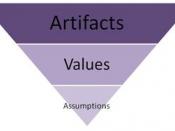The purpose of this book is to provide you with an introduction to advanced study in organizational behavior. Our assumption is that you, like millions of individuals throughout the world, will spend your professional work life acting and reacting to the forces and individuals that comprise the social networks we call organizations. Consequently, the topics we shall discuss in this book (communication, motivation, decision-making, etc.) will form the basis for recurring themes in your own professional life. In other words, as either manager or subordinate, you will encounter people with whom you will need to communicate effectively. As a manager you will be expected to motivate subordinates, engage in decision making, employ information technology, act ethically, evaluate the performance of others and demonstrate that elusive quality known as leadership. In any organization that you find yourself, you will have to participate with others in order to achieve organizational objectives.
Many of the people with whom you must participate will react to you on the basis of their perception of your organizational role. You will need to understand what quality is and how to achieve it. Moreover, as you move between and among organizations, you will sense that organizations have different climates and that they possess both formal and informal structures. If you have the opportunity to move between public and private organizations you may observe different goals, performance measures, and personnel practices. You may also observe that different organizations have different cultures which are reflected in different rituals and norms. Finally, if you remain in an organization long enough, you will observe that organizations can and do "learn" over time.
The previous discussion about the kinds of activities you will engage in or are likely to encounter in your personal organizational odyssey are the chapter titles of this book.


